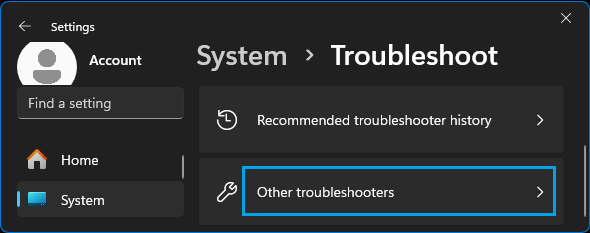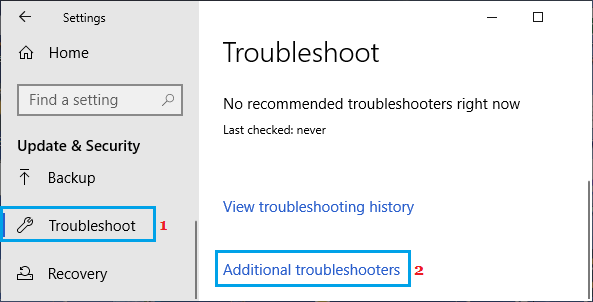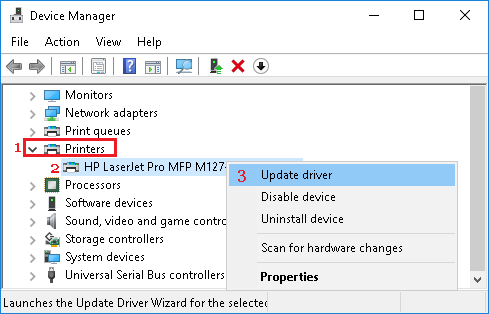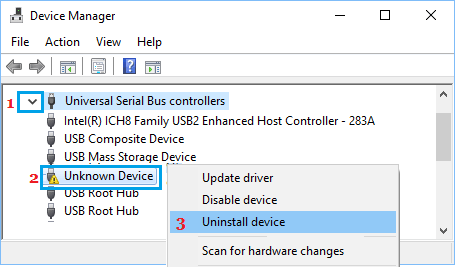When you connect printer, camera, flash drive, phone or an external storage drive to the computer, the drivers required to run these devices are pushed through the USB Port and get automatically installed on the computer.
However, sometimes the outdated version of the Driver Software remains active in memory, which leads to “Windows Cannot Load the Device Driver for this Hardware” error on the computer.
In certain cases, this error message can also be caused due to an app, programs or proceess not being compatible or interfering with proper functioning of certain device drivers on your computer.
Windows Cannot Load the Device Driver (Code 38) Error
If your Windows 11/10 computer is coming up with “Windows Cannot Load the Device Driver for this Hardware (Code 38) error, you should be able to fix this problem using the following methods.
1. Restart the Computer
1. Power OFF the computer and wait for it to completely shut down.
2. After 60 seconds, restart the computer.
As the computer restarts, it should automatically unload outdated Device Drivers and install the updated Device drivers on your computer.
2. Run Hardware and Devices Troubleshooter
Windows comes with its own built-in “Hardware and Devices Troubleshooter” which can help in fixing this problem.
Windows 11: Go to Settings > System > Troubleshoot > Other troubleshooters.

Windows 10: Go to Settings > Update & Security > Troubleshoot > Additional Troubleshooters.

3. On the next screen, select the Device that is causing problems on your computer and click on Run the Troubleshooter.
4. Wait for Windows to find and fix the problem with the device.
3. Manually Update Device Driver
The problem could be due to Windows being unable to automatically update the device drivers on your computer.
1. Right-click on Start button > click on Device Manager.
2. On the Device Manager screen, right-click on the problematic Device and select the Update Driver option.

3. On the next screen, select Search Automatically for updated driver software option.
4. Patiently wait for Windows to search for the updated driver and install it on your computer.
Note: If Windows is unable to find the required driver, visit the manufacturers website and see if an updated driver is available.
If a driver is available, download the driver software on your computer and restart the computer.
4. Uninstall USB Device
As mentioned above, the problem could be due to a USB connected Device not being recognized by the computer.
1. Right-click on Start button > click on Device Manager.
2. On Device Manager screen, expand the entry for Universal Serial Bus Controllers > right-click on the Unknown Device and click on Uninstall Device option.

3. On the confirmation pop-up, click on OK to confirm.
4. Repeat the above steps for other affected devices (if any) and Restart your computer.
Once the computer restarts, Windows should automatically load the required drivers.
5. Clean Boot
If the problem has started after installing a particular app or program, you can uninstall that particular App and see if the problem goes away.
If you are not sure, start your computer in Clean Boot Mode and see if the problem goes away. If the problem does not occur in Clean Boot Mode, it confirms that the problem is being caused by a recent app installed on your computer.
The next step is to identify the particular program or app that is causing this problem on your computer. This can be done by selectively enabling apps on your computer and checking their impact on the computer.